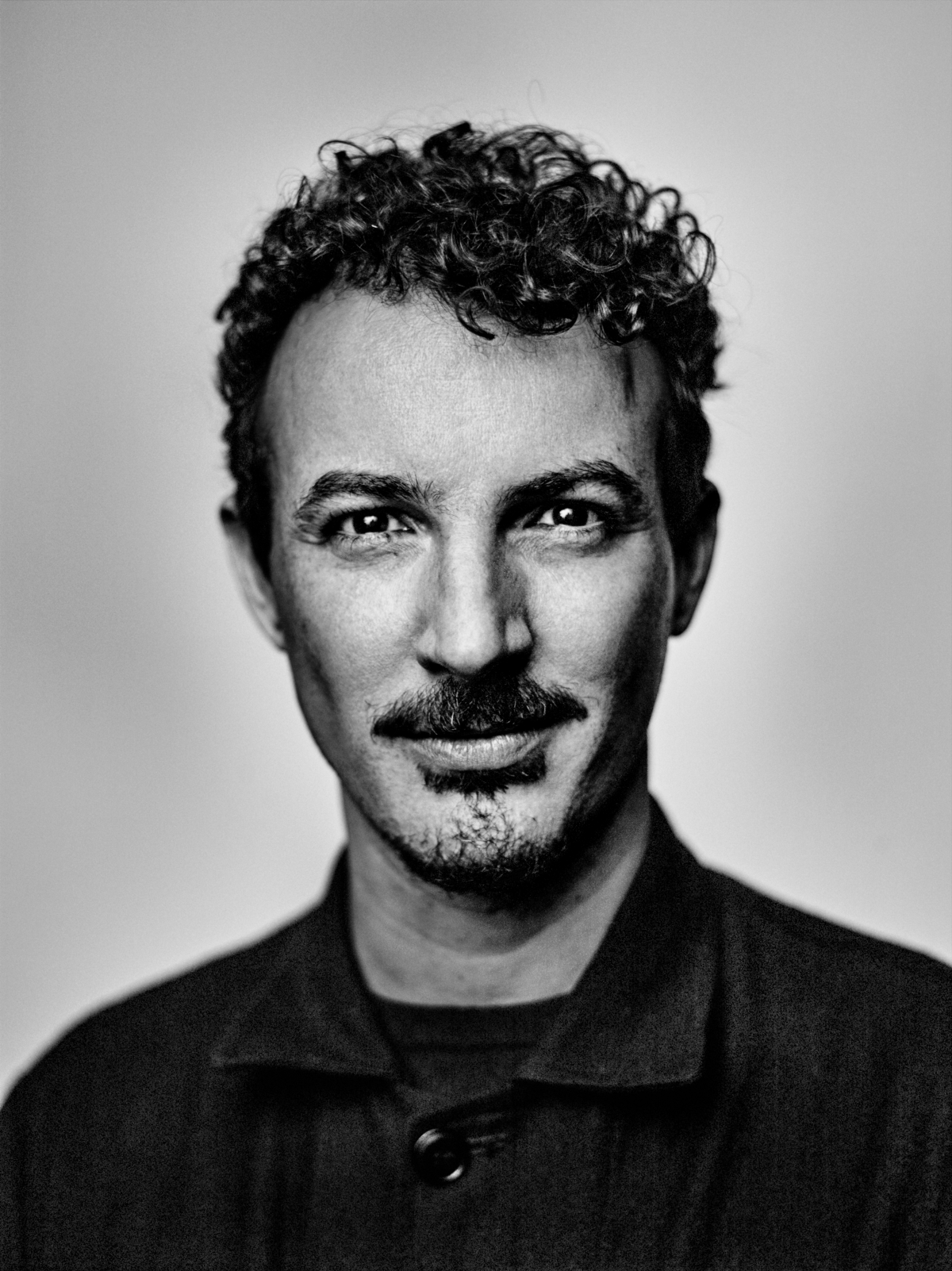Nicolas Ouchenir is a man of his word – quite literally. For the past ten years, the handwriting of this self-taught French calligrapher has adorned the invitations of leading Parisian fashion houses such as Louis Vuitton, Hermès and Christian Dior. Also an exhibiting artist in his own right, he spoke to Hieronymus about his most memorial commissions, slowness and the joy of collaboration.
A Man of Letters
Writing Culture
You are self-taught in the art of calligraphy, how did it turn into a profession?
I went to a business school and while I was there I realised I preferred the arts to finance. That was twenty years ago. My first job after graduating was selling art at JGM Galerie (owned by the veteran art dealer Jean-Gabriel Mitterrand), in Paris. At each of our openings, I insisted on writing the invitation cards out by hand, and that’s how it first began. After I left the gallery in 2002, it was Pia de Brantes, the queen of Parisian public relations, who really got me started. I began to pen invitations from her office, addressed to the great aristocratic families and for state functions at Versailles. Through this, I met Muccia Prada and Rick Owens.
How and where do you work? How do you find the space to produce such delicate work in the middle of the Paris fashion world?
I live and work in Paris. To work, I need some space, some wine, music and other people. Even though it is just me who does the writing, I have a small team, which is why we’re called Atelier Nicolas Ouchenir. Their presence is essential. It is always a collaboration that takes my interpretation into account. It almost becomes a form of consultancy.

© Clément Schneider
Do you enjoy the collaborative process? How do you create something as personal as a set of handwriting “together” with a client?
Handwriting helps to create an identity, a form of wealth in itself. A fashion house’s graphic character reflects its history – whether invented or not. Between seasons, when there are fewer commissions for handwritten invitations, I work on logos and visual identities for several houses, such as Nina Ricci, Christian Dior, Cartier, Chaumet and others. I’m also showing my work more. I exhibited during the 2017 Fashion and Photography Festival in Hyères, in the South of France and I’m currently developing an exhibition that will take place in Marrakesh.
Your work covers a broad spectrum – from logos to tattoos, party invites to stone engravings, love letters to museum signage. Do you have a favourite type of project? Do any particularly stand out?
For the strangest, I would have to say an invitation written with pig blood. And for the coolest, all the Rick Owens invitations are crazy each season – they use all kinds of different materials, such as leather. Right now, I’m excited to be working on the windows of the Hotel de Crillon in Paris, on my new exhibition in Tallinn in Estonia, and on a collaboration with the Arthus Bertrand jewellery house.
In recent years you have produced works that can be read as calligraphy, illustration and portraiture all at once. How did that direction develop? What are you influences?
I take photos of everything. I also have a really good memory, even when it comes to things that you don’t necessarily want to remember. I do a lot of research. I love reading and own a huge library of books. If I am invited to give a lecture at a graphic design school, I tend to tell the students that, for me, calligraphy is a way of life rather than just something I do; that mindset is important. But, most of the time, my inspiration comes from my friends and the people around me, sometimes even a stranger in the street.
Is the “slowness” of calligraphy, as some might suggest, at odds with our contemporary, digitized era?
All these digital mood boards you can find online, such as Tumblr or Pinterest pages, demonstrate that today much of the imagery doesn’t really seem to “belong” to anyone in the end, there is no longer a sense of property. Whereas writing shows who you truly are. You need to know yourself in order to take a pen and put your feelings down on paper.
Are you particular about what tools you use and where you work?
Calligraphy is everywhere and I can write with anything. When I have something in mind that I need to get onto paper, I’ll use whatever tools are to hand, without even thinking about it. I’m always engaged with conversation; all my work is a form of correspondence – either with myself or someone else.
Nicolas is a friend of the house and we have the pleasure of occasionally welcoming him in our store for events.